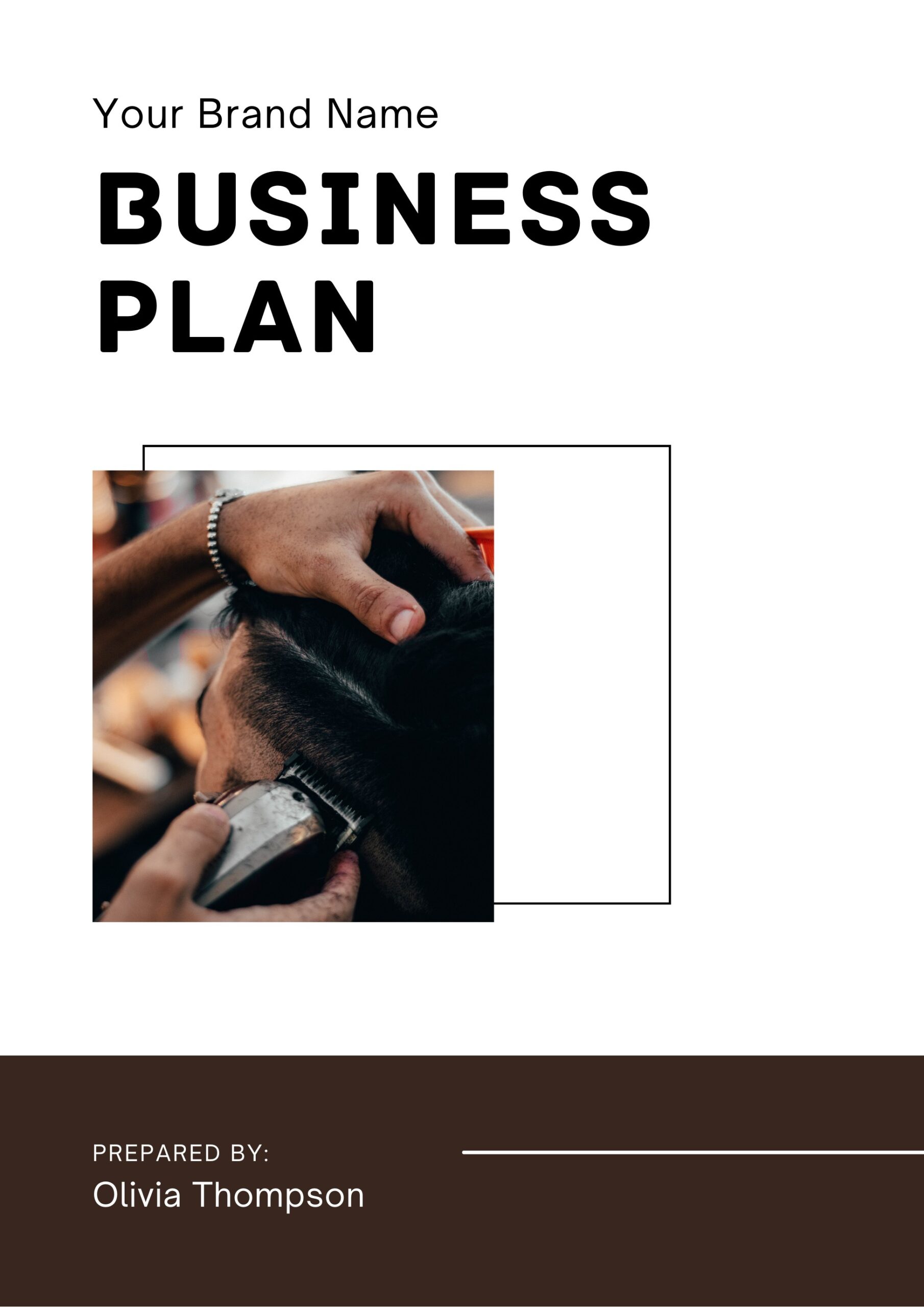Written by Elma Steven | Updated on June, 2024
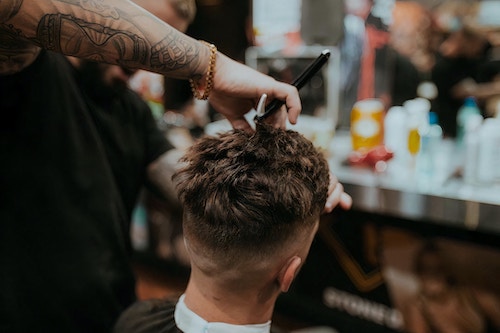
How to Write a Barber Shop Business Plan?
Barber Shop Business Plan is an outline of your overall barber shop business. The business plan should include a 5 year financial projection, marketing plan, industry analysis, organizational overview, operational overview and finally an executive summary. Remember to write your executive summary at the end as it is considered as a snapshot of the overall business plan. You need to be careful while writing the plan as you need to consider various factors that can impact the business’s success.
Table of Contents
Executive Summary
Overview: Dapper Fellas Barber Shop is a well-established company. From the beginning, we decided to hire only competent and licensed barbers and hairstylists for our barbershop’s numerous jobs. We are well-versed in the norms and regulations that regulate the barbering and cosmetology industries, so we chose only the most experienced and competent personnel to serve as the organization’s core team. We aim to use their knowledge and experience to help us develop a company brand that will be well-received across California and the United States.
Mission: Customers will be able to relax both their mind and body via various services at Dapper Fellas Barber Shop, which will give a cozy, but exciting old-world gentleman’s club environment.
Vision: Dapper Fellas Barbershop will develop itself as a world-class service provider where customers may escape the strains of everyday life, revitalize their energy, and enjoy the companionship of their coworkers and friends.
Industry Overview:
As of 2023, the global barber shop industry is experiencing steady growth, with a market value projected to exceed $26 billion by 2025. This growth is fueled by a rising emphasis on personal grooming among men, along with an increased demand for specialized services such as beard styling and premium hair care. The industry’s expansion is also driven by a growing number of men seeking more than just a traditional haircut, opting for a complete grooming experience that includes services like scalp treatments and facial massages. With the evolving fashion trends and the influence of social media on style, barber shops are becoming key players in the personal care sector, offering a blend of traditional and modern grooming services to cater to a diverse clientele.
Check out this guide on how to write an executive summary? If you don’t have the time to write on then you can use this custom Executive Summary Writer to save Hrs. of your precious time.
Financial Overview:
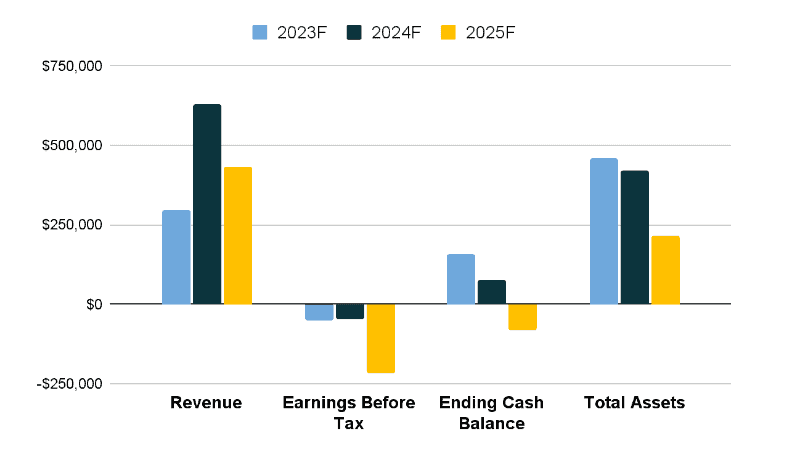
Business Description
Business Name:
Founder: Jacob Harris
Management Team:

Legal Structure: LLC
Location:
Mission: “At [Barbershop], our mission is to provide high-quality, traditional barbering services in a welcoming and professional environment. ”
Vision: “Our vision at [Barbershop] is to be the leading provider of traditional barbering services in our community, recognized for our exceptional customer service, skilled and experienced barbers, and modern and welcoming atmosphere. ”
Goals:
✅ Develop a reputation for providing high-quality services, excellent customer service, and a comfortable, welcoming atmosphere that keeps customers coming back.
✅ Provide excellent customer service, developing personal relationships with customers, and offering incentives for repeat business.
✅ Streamline processes, automate tasks and use technology to improve communication and record keeping, to help maximize the time spent with clients.
Products:
✅[Mention your services in bullet points]
Financial Overview
Fund Usage Plan
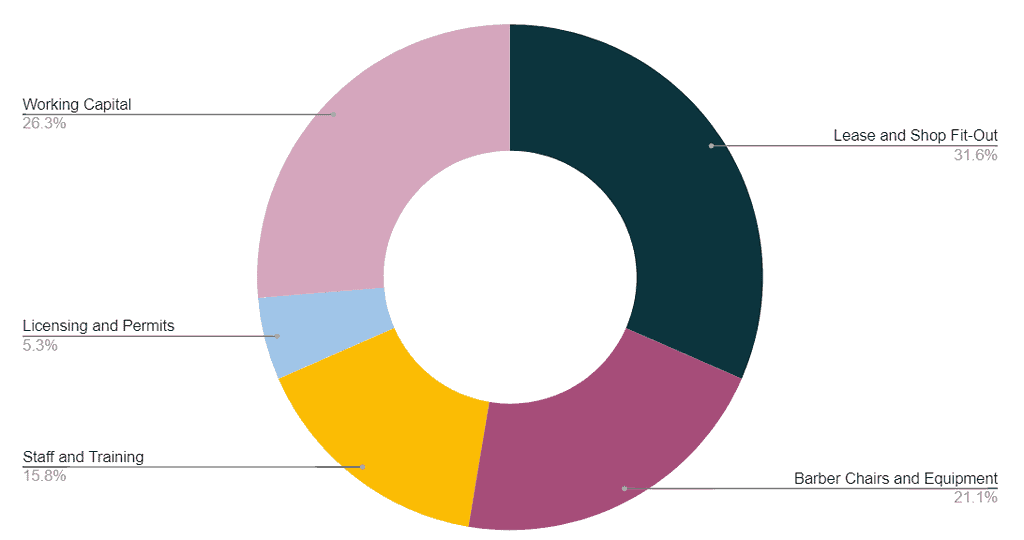
Key Metrics:

Business Model Canvas
Check out 100 samples of business model canvas.
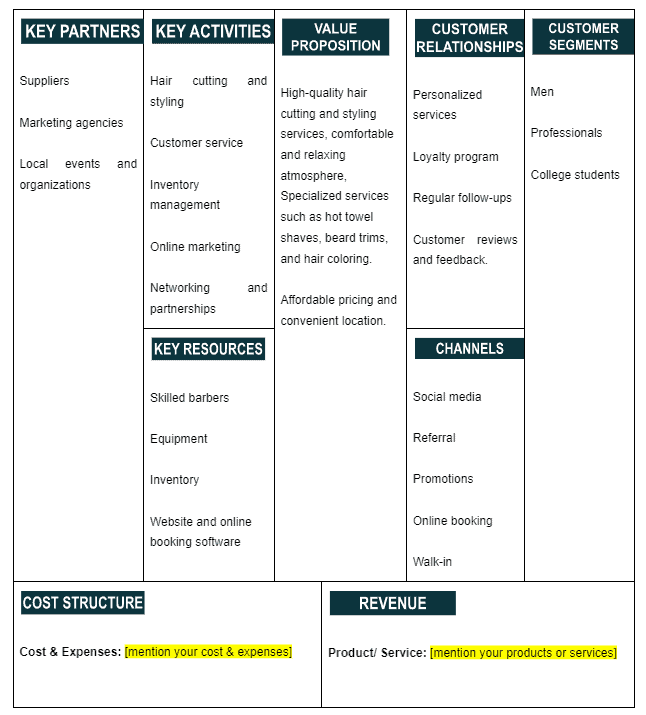
SWOT
Check out the 100 SWOT samples which will give you a better idea on SWOT writing process.
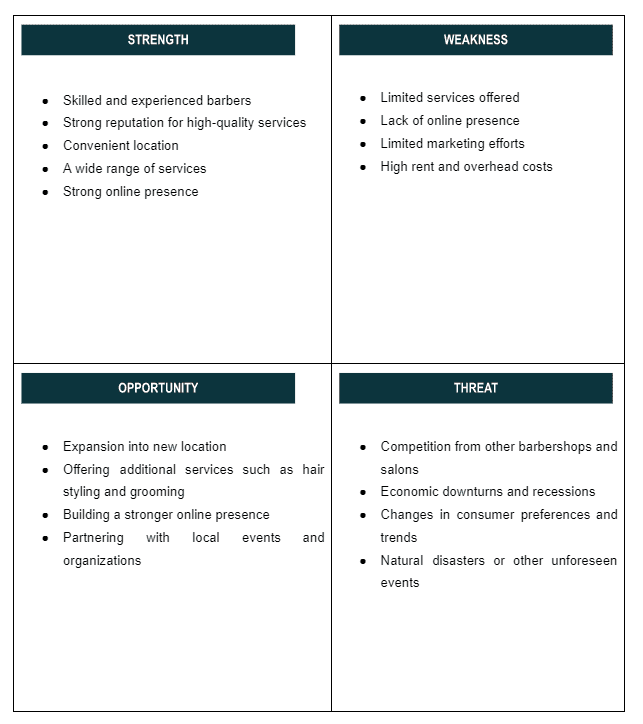
Organizational Overview
Founder

My name is Jacob Harris, and I own a barber shop in the neighborhood. Since I was a little boy, I’ve had a deep-seated interest in all aspects of personal care, particularly cosmetology. I really think that taking care of one’s appearance may not only increase one’s level of self-assurance but also make an impression that is difficult to forget on others. This conviction pushed me into a profession in the barbering sector, and it finally compelled me to launch my own business in the field.
My interest in the craft of barbering began at an early age, when I was captivated by its artistic qualities and its meticulous accuracy. I spent years honing my talents via practice and training, always working to perfect my art in the hopes that it would bring me more success. I engaged myself in the most recent styles and approaches to barbering while also developing an appreciation for the timeless traditions that are associated with traditional barbering.
When I made the decision to open my own barber shop, I envisioned it being more than simply a location where people could have their hair cut. I envisioned individuals being able to come in, make themselves at home, and enjoy first-rate care in a setting that I designed just for that purpose. I took great attention in designing the store to exude a combination of contemporary aesthetics and a warm and inviting ambiance. This was done to ensure that each and every customer is made to feel cherished and well taken care of.
Organogram
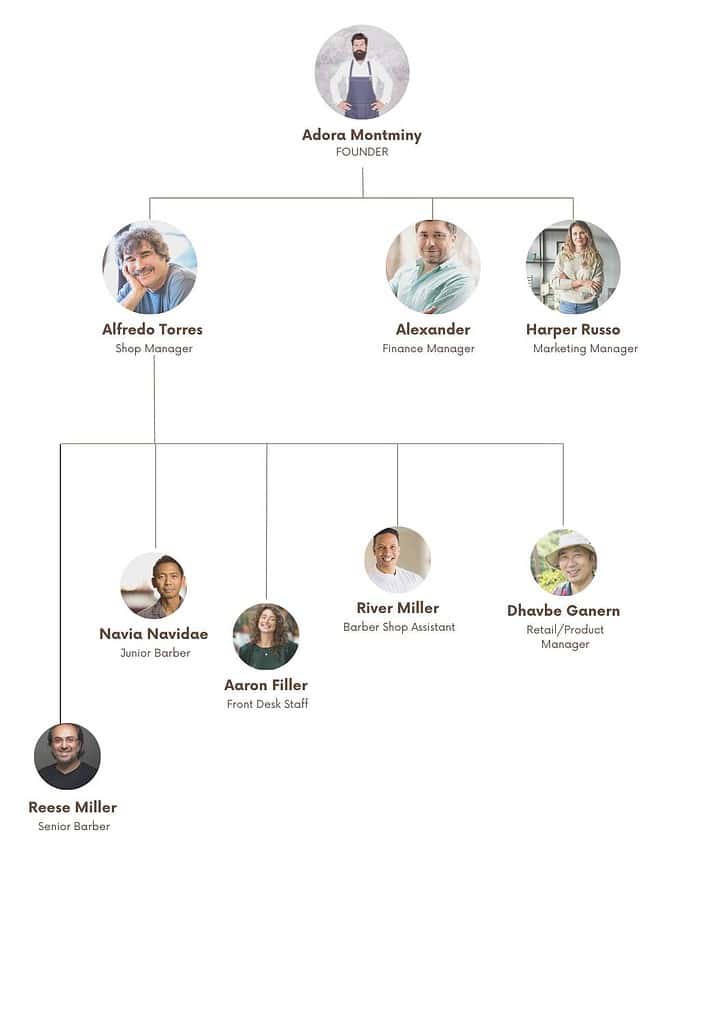
Industry Analysis
The barber shop industry has been experiencing a renaissance in recent years, marked by a renewed appreciation for classic grooming services combined with modern style trends. As of 2023, the industry boasts a substantial market value, expected to reach over $26 billion globally by 2025. This growth is attributed to the increasing interest in men’s grooming, with a significant uptick in demand for specialized services like beard grooming, luxury shaving, and personalized hair styling. The trend reflects a broader cultural shift where male grooming is increasingly seen as an aspect of personal style and self-care.
Technological advancements and the rise of social media have also played a pivotal role in transforming the barber shop industry. Online booking systems, digital marketing, and social media platforms have enabled barber shops to reach a wider audience, showcase their work, and build a loyal customer base. Additionally, the influence of social media on fashion and grooming trends has led to a demand for more innovative and diverse haircuts and styles, pushing barber shops to continually update their skills and offerings.
Looking forward, the barber shop industry is poised for continued growth and evolution. There’s a growing emphasis on creating unique customer experiences, with shops incorporating elements like vintage decor, complimentary beverages, and entertainment. Sustainability and the use of organic grooming products are also becoming more prominent, aligning with the wider environmental consciousness among consumers. This industry’s future will likely be shaped by its ability to adapt to these changing consumer preferences, maintain high standards of service, and embrace new trends and technologies.
.

Source: kentleyinsights
The worldwide barber supply industry is expected to grow by over $20 billion. Shampoo, hair gel, and conditioners are part of this large business. From 2012 to 2017, the sector had a yearly growth of 1.9 percent. The industry is expected to grow at a rate of 3% each year between 2017 and 2022. There are 4,377 barbershops in 4,845 locations in the barbershop business. Employees are on average 39.5 years old. This implies a diverse group of barber professionals, including young, elderly, and middle-aged men and women. The average yearly salary per employee in California is $23,590. In the United States, the average annual salary is USD 30,414. Shops in low-income areas may only be able to charge $7–10 for a haircut. Think about what kind of barbershop you want to run and who you want to serve. The barbershop sector in the United States has grown at a rate of 6% per year over the last three years, reaching a revenue of $1 billion.
According to the Bureau of Labor Statistics, barbershops employed 738k workers in 2019. According to ACS statistics, the number of persons employed in the Barbershops Industry Group has decreased by 5.2 percent, from 83.3k in 2018 to 79k in 2019. Barbers hold the most barbershop jobs (89.9%), followed by hairdressers, hairstylists, and cosmetologists (3.73%), and supervisors of personal care and service employees (3.22%).
There would be a substantial competitive advantage if you could provide good service at a reasonable price. Customers would not come back to your store if you charged exorbitant pricing. If you establish low pricing, more people will become repeat customers. As a result, building long-term consumer relationships is critical. A barbershop is a gathering place for many guys, one of the most significant aspects. There are folks in your neighborhood that you will not be able to locate. You will, however, get the opportunity to meet them at a barbershop.
The sector is likely to benefit from the use of social media platforms. This increase will aid the business in attracting specialized service consumers. Barbers may utilize social media to sell their services and demonstrate their abilities to a large audience. Barbers will be sought out by customers who frequently read their web material as they develop a reputation for providing excellent services. As demand for specialized barbers grows, they will be able to boost service prices as surplus demand from customers outnumbers the barbershop’s capacity. As a result of increased premium product costs, industry demand for industrial goods is likely to increase.
Marketing Plan
A marketing plan outlines the company’s strategy to promote its products or services to its target audience. It includes specific tactics and channels the business will use to reach potential customers. This section defines the company’s unique value proposition, identifies the target market segments, and discusses the competitive landscape. It also includes insight into budget allocation, projected outcomes and key performance indicators to measure success. Marketing plan helps businesses demonstrate their understanding of the market dynamics, their positioning within the industry and their approach to driving customer engagement and sales.

Content Marketing: Create a blog on your Blackbird Acupuncture website on what you has to offer to prospective customers.
Discounts: Provide multiple rewards or incentives to Blackbird Acupuncture‘s frequent customers, you’ll be more likely to attract them. Create a member referral scheme, for example, where members get a discount if they successfully recommend someone.
Social Media: Engage and promote Blackbird Acupuncture on Twitter, publish news on Facebook, and utilize Instagram to promote curated photos of your clinic.
SEO (Search Engine Optimization) Local SEO makes it easier for local consumers to find out what you have to offer and creates trust with potential members seeking for what your clinic has to offer.
Email Marketing: Blackbird Acupuncture will be sending automated in-product and website communications to reach out to consumers at the right time. Remember that if your client or target views your email to be really important, they are more likely to forward it or share it with others, so be sure to include social media share.
Financials
A financial plan provides a comprehensive projection of a company’s financial health and its anticipated monetary performance over a specified period. This section encompasses a range of financial statements and projections such as profit and loss statements, balance sheets, cash flow statements and capital expenditure budgets. It outlines the business’s funding requirements, sources of finance and return on investment predictions. The financial plan gives stakeholders particularly potential investors and lenders a clear understanding of the company’s current financial position. A financial plan helps businesses demonstrate their financial prudence, sustainability, and growth potential.
Earnings
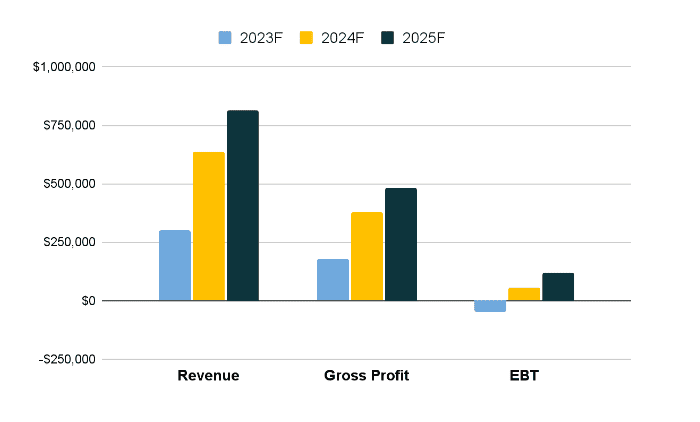
Liquidity

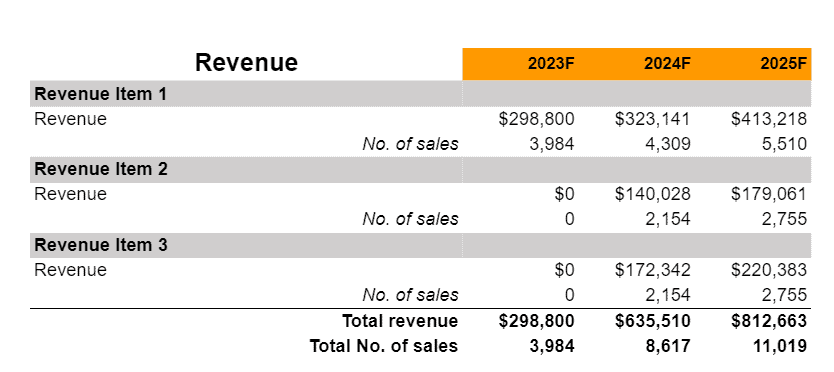
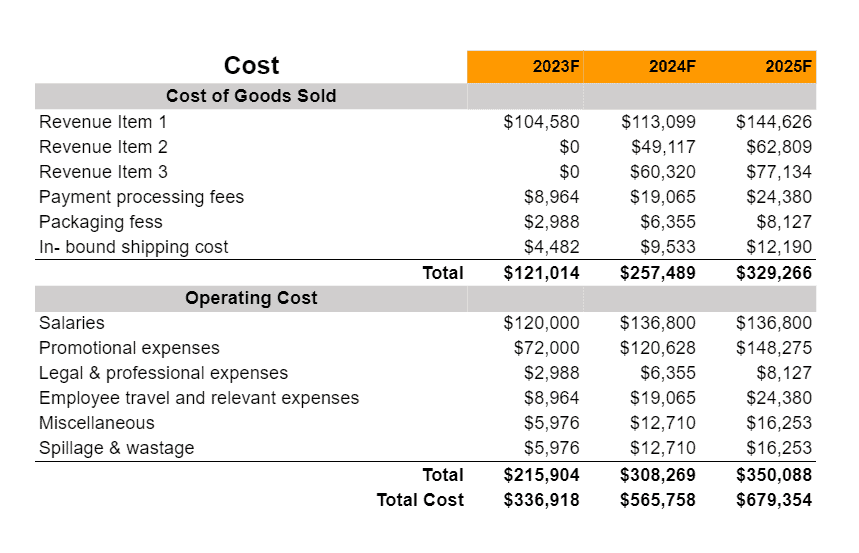
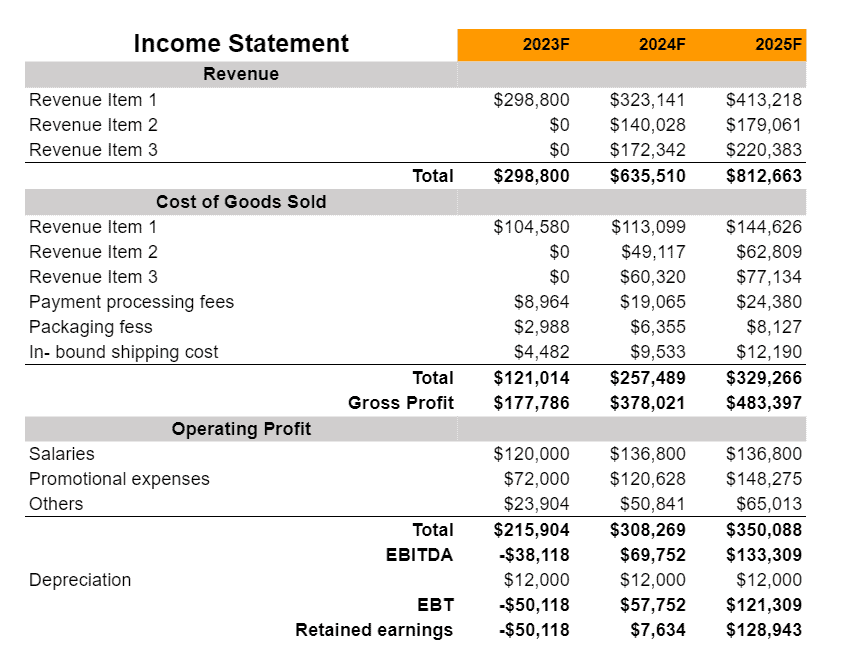
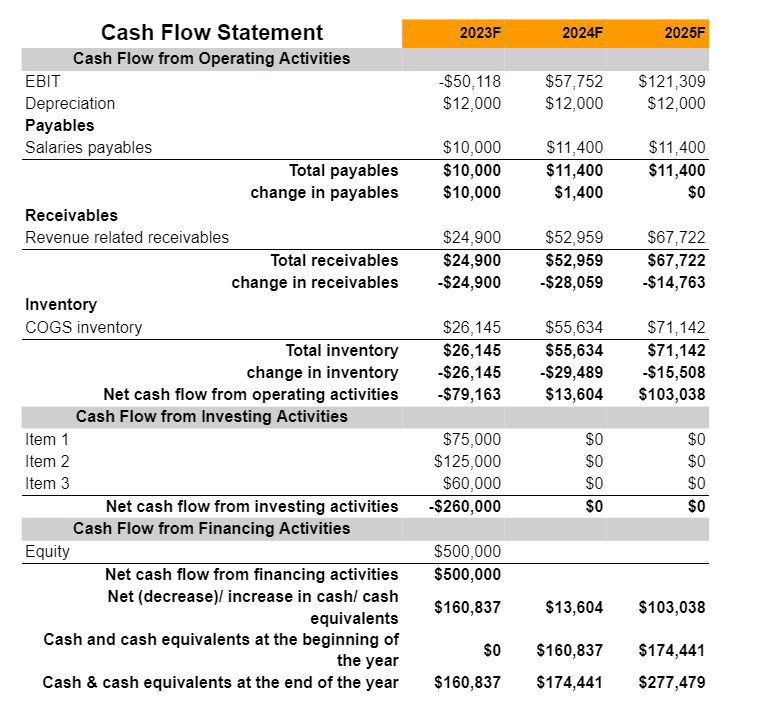
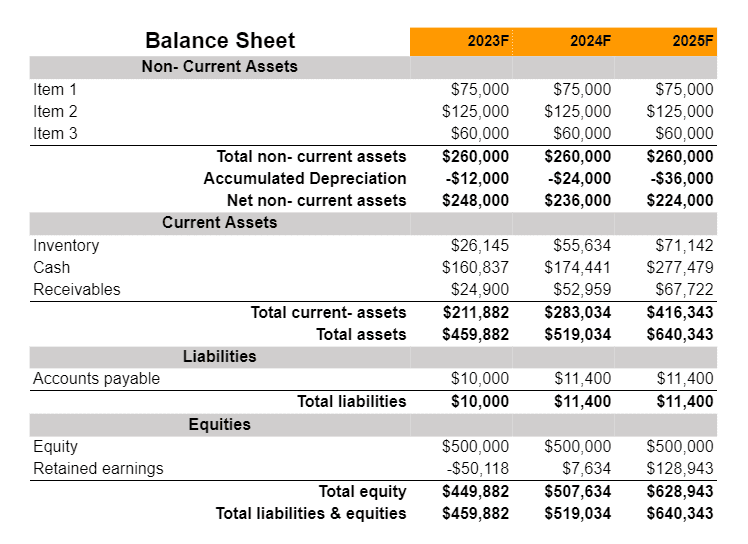

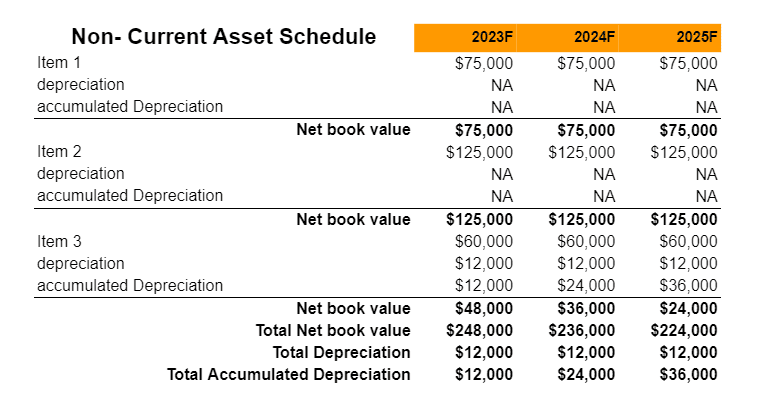
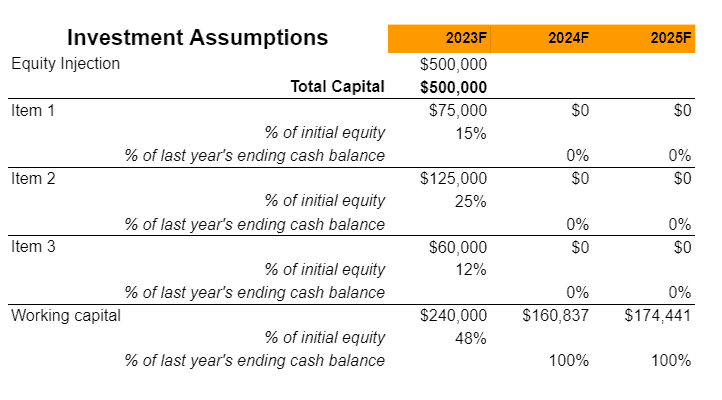
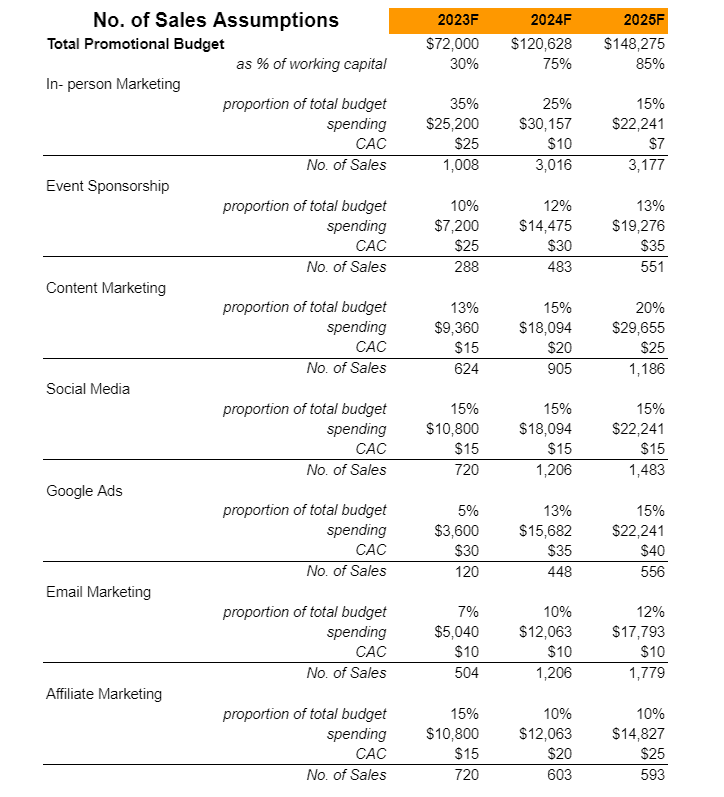
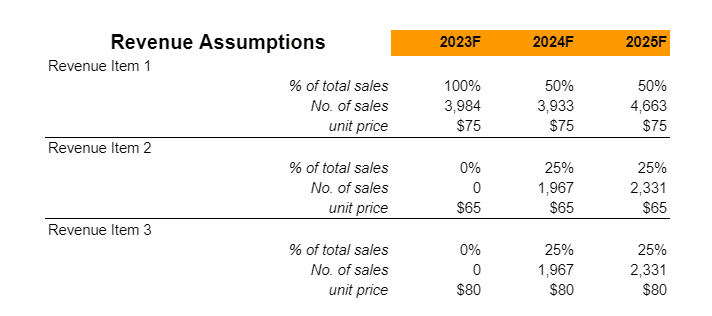
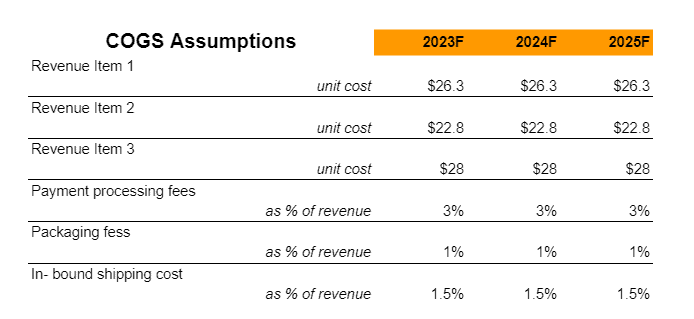
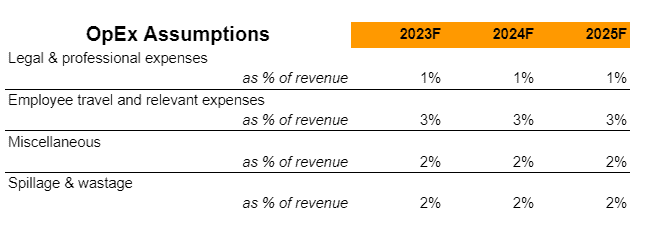
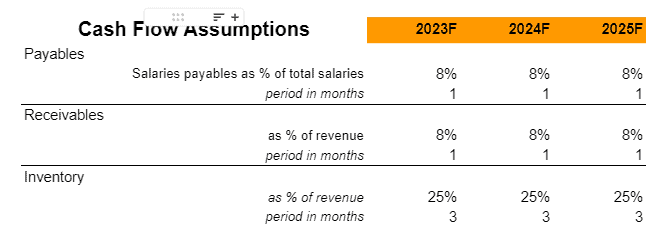
You can also check this guide for reference.
Related Business Plans:

